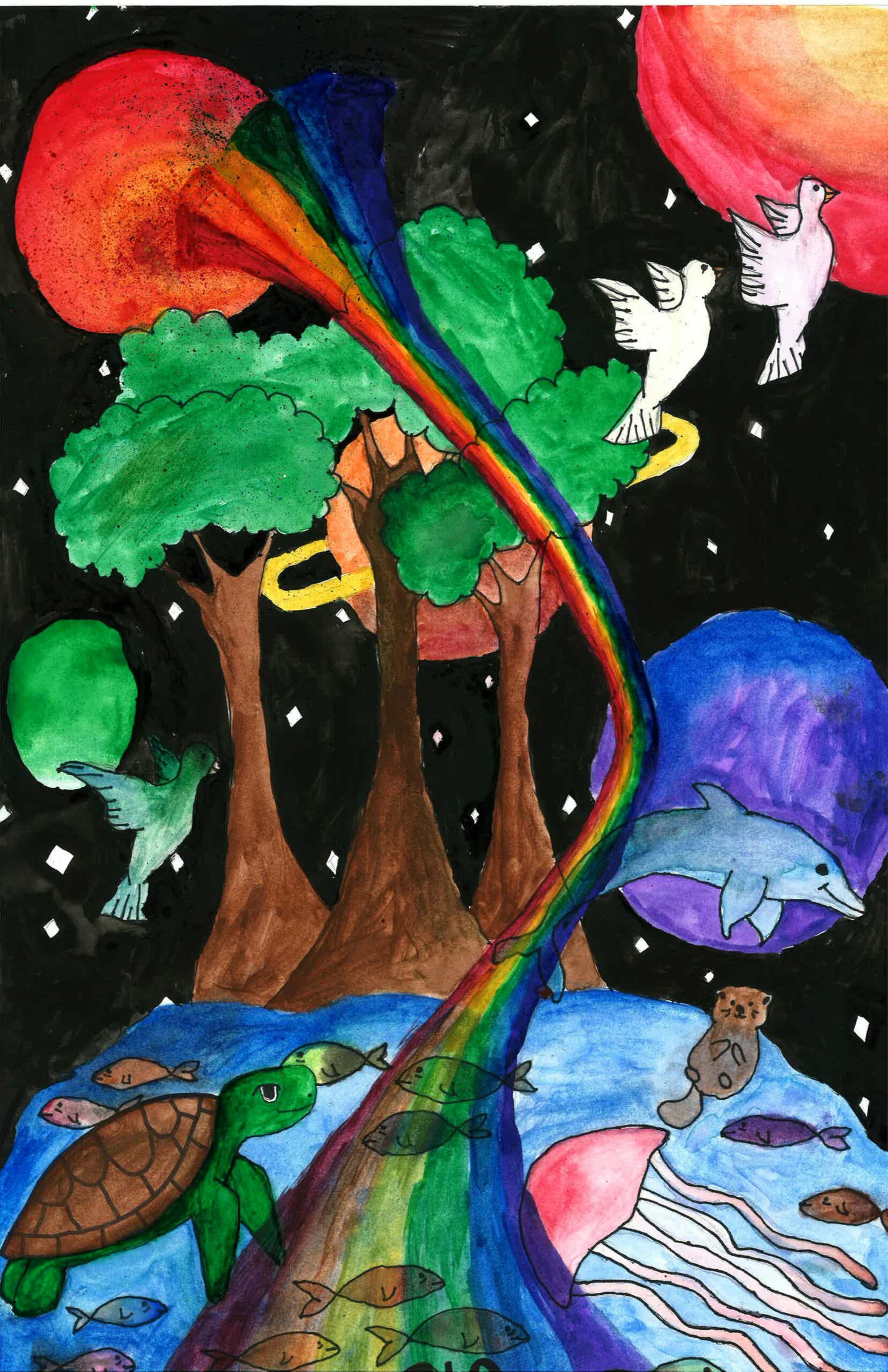Blog
vdB 1231, as designated in the van den Bergh catalog2, is a blue reflection nebula7 located in the constellation Serpens approximately 800 light years (230 +/- 20 parsecs)3 from the Earth. This colorful nebula is embedded in a large cloud of dust and gas known as the Serpens Cloud3. This cloud overlays a rich field of background Milky Way stars. These background stars appear to be heavily “reddened” by the cloud’s intervening dust. A large dark nebula extending throughout the region is cataloged Dobashi 12605,6. These areas of dense dust obscures background stars and other celestial objects. The bright blue central nebula shines from light reflected from the bright star designed HD 1706341. The blue color is a result of the surrounding dust reflecting the shorter wavelengths of light more efficiently than longer wavelengths. This is essentially the same phenomena that makes our Earthly sky appear blue.
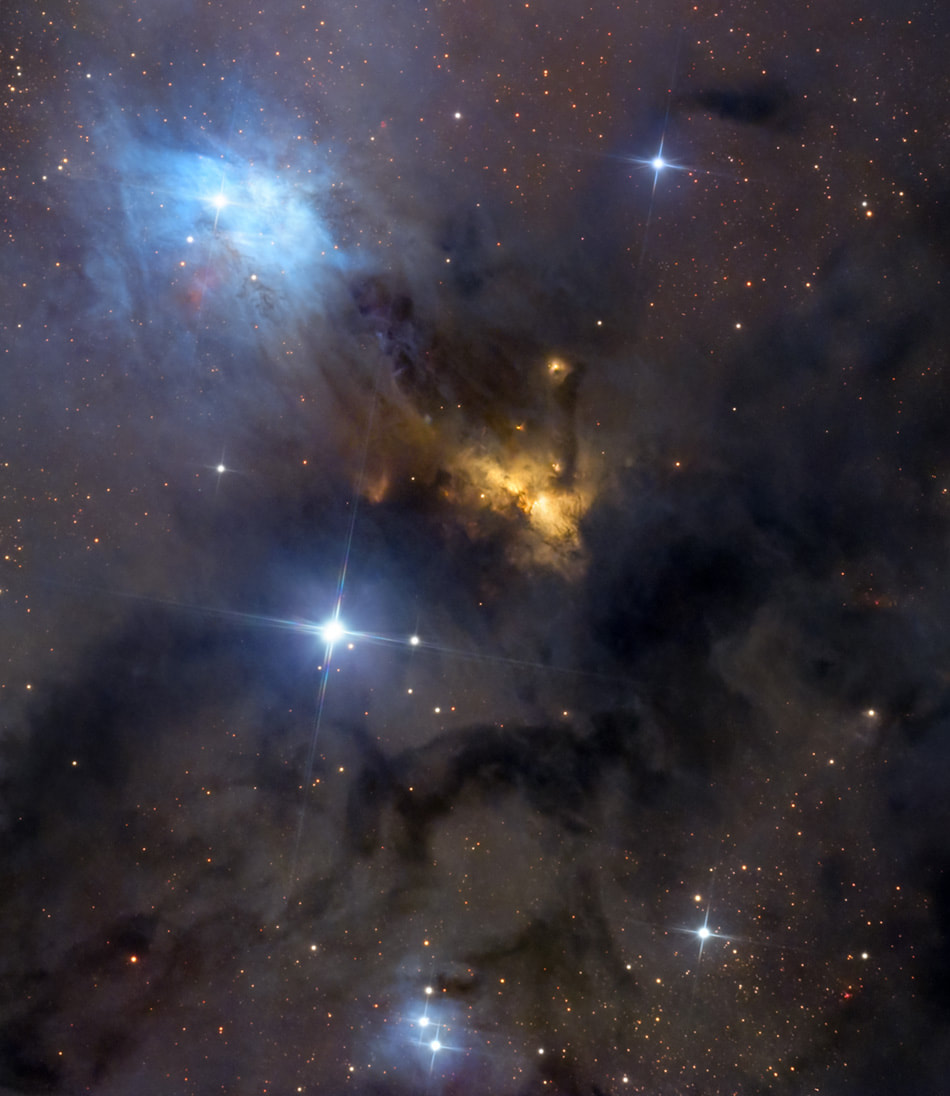
James Lee Keltner (born April 27, 1942) is an American drummer and percussionist known primarily for his session work. He was characterized by Bob Dylan biographer Howard Sounes as “the leading session drummer in America”.
Keltner was inspired to start playing because of an interest in jazz, but the popularity of jazz was declining during the late 1950s and early 1960s, and it was the explosion of pop/rock in the mid-1960s that enabled him to break into recording work in Los Angeles. His first gig as a session musician was recording “She’s Just My Style” for the pop group Gary Lewis and the Playboys.
Keltner’s music career was hardly paying a living, and for several years at the outset he was supported by his wife. Toward the end of the 1960s, he finally began getting regular session work and eventually became one of the busiest drummers in Los Angeles. His earliest credited performances on record were with Gabor Szabo on the 1968 album Bacchanal.
In 1968, Keltner was also working in a music shop in Pasadena just down the street from the old Ice House coffeehouse when he was recruited to play drums in a “psychedelic” vocal group named “MC Squared” along with Michael Crowley, Michael Clough, Linda Carey—all from the folk group The Back Porch Majority)—and session guitarist/bassist Randy Cierley Sterling. They were signed by Mo Ostin and recorded an album for Warner/Reprise originally titled “MC Squared” which has later been re-mastered and re-released in 2012 with the album title “Tantalizing Colors.” They appeared live that same year on the Hugh Hefner / Playboy Magazine television show Playboy After Dark playing two songs: an original by MC Squared members Michael Clough and Michael Crowley titled “I Know You” and a version of the Fred Neilsong Everybody’s Talkin’. Both Playboy After Dark performances with Keltner playing drums can currently be viewed on YouTube.
It was his work with Leon Russell playing on Delaney & Bonnie’s Accept No Substitute that attracted the attention of Joe Cocker, who recruited Russell and everyone else he could out of the Delaney & Bonnie band for his Mad Dogs & Englishmen tour. Playing with Joe Cocker led to work in 1970 and 1971, on records by Carly Simon (No Secrets), Barbra Streisand (Barbra Joan Streisand), Booker T. Jones (Booker T. & Priscilla), George Harrison (The Concert for Bangladesh) and John Lennon (Imagine).
more...Conrad Henry Kirnon (April 27, 1927 – November 30, 1994) known professionally as Connie Kay, was an American jazz and R&B drummer, who was a member of the Modern Jazz Quartet.
Self-taught on drums, Kay began performing in Los Angeles in the mid-1940s. His drumming is recorded in The Hunt, the recording of a famous Los Angeles jam session featuring the dueling tenors of Dexter Gordon and Wardell Gray on July 6, 1947. He recorded with Lester Young‘s quintet from 1949 to 1955 and with Stan Getz, Coleman Hawkins, Charlie Parker, and Miles Davis.
Kay did R&B sessions for Atlantic Records in the early to mid-1950s, and he was featured on hit records such as Shake, Rattle and Roll by Big Joe Turner and Ruth Brown‘s (Mama) He Treats Your Daughter Mean.
Kay joined the Modern Jazz Quartet in 1955, replacing original drummer Kenny Clarke. He remained through the group’s dissolution in 1974 and occasional reunions into the 1990s. In addition to his MJQ compatriots, he had an enduring partnership with cool jazz altoist Paul Desmond through the first half of the 1960s. He played drums on several of Irish singer-songwriter Van Morrison‘s albums: Astral Weeks, one song on Saint Dominic’s Preview, and four songs on Tupelo Honey.
more...
Friday April 26th 6pm. Accompanying the Shabbat Service with Inbal Sharett-Singer, Jayson Rodovsky, Jeff Bailey, Pete Whitman and mick laBriola.
more...The Rosette Nebula (also known as Caldwell 49) is an H II region located near one end of a giant molecular cloud in the Monoceros region of the Milky Way Galaxy. The open cluster NGC 2244(Caldwell 50) is closely associated with the nebulosity, the stars of the cluster having been formedfrom the nebula’s matter.
The nebula has been noted to be having a shape reminiscent of a human skull, and is sometimes referred to as the “Skull Nebula.” It is not to be confused with NGC 246, which is also nicknamed the “Skull Nebula. Here is the panoramic photo of the Rosette Nebula, Cone Nebula, Christmas tree.
Following these two clear nights, without a Moon at the start of the night, I took a wide shot of the Rosette nebula, of the cone / Christmas tree, there are 3 photos with the 300mm f2.8 canon to make this panorama.
There are 4 hours per panel with unit exposures of 5 min.
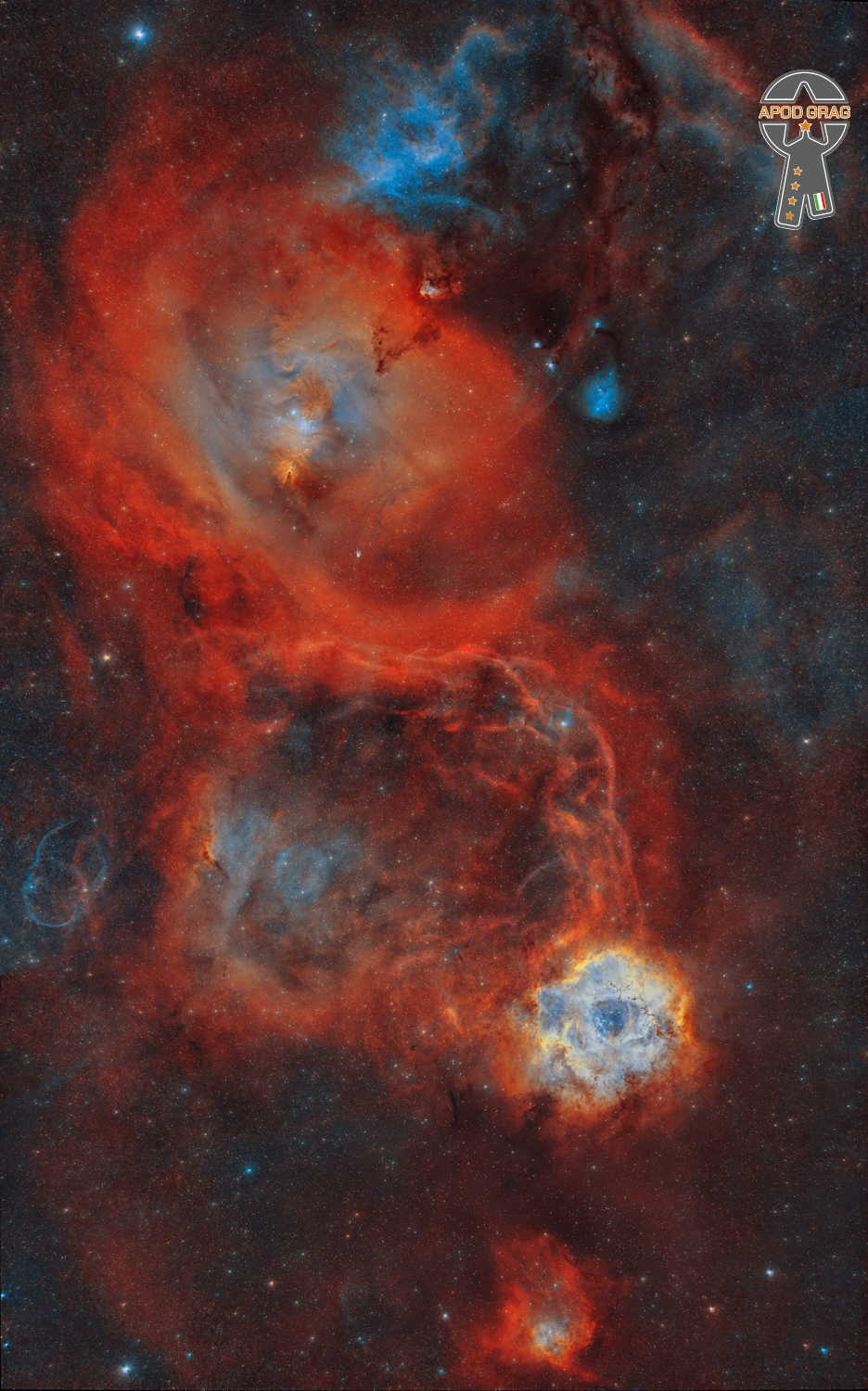
more...
Shankar Lakshminarayana (born 26 April 1950), better known as L. Shankar, is an Indian violinist, singer and composer who also goes by the stage name Shenkar. Known for his innovative contributions to world music, he is often regarded as one of the pioneers of East- West fusion, blending the rich traditions of Indian classical with Western genres such as jazz, rock, and electronic music. His world music albums with the band Shakti during the mid-70s became the ‘standard to gauge the playing and composing abilities of any world musician following in Shakti’s expansive wake”. He is credited with inventing the stereophonic double violin (known as the LSD – L.Shankar Double Violin), which covers the orchestral string family’s range. In 1990, Shankar’s talam-bending (time cycles of 9 3/4 & 6 3/4 beats) Pancha Nadai Pallavi’ album was on the Billboard top ten world music chart for three months becoming the first traditional Indian record to reach those heights. His 1995 Raga Abheri album was nominated for a Grammy Award, in the Best World Music Album category.With Peter Gabriel, he worked on the Grammy winning album Passion(1989), the soundtrack album for Martin Scorsese’s The Last Temptation of Christ(1988), and wrote and performed vocals on Mel Gibson’s ‘The Passion of the Christ’ (2004) which won a Dove Award for Instrumental Album of the Year at the 36th GMA Dove Awards. He also worked on the soundtrack for the 2002 film Queen of the Damned with Jonathan Davis and Richard Gibbs and recorded eight songs of which five were picked for the movie. Additionally, he collaborated on the original score for NBC’s hit TV series Heroes with Wendy & Lisa. As an acclaimed musician, Shankar is ranked as one of the top famous male violinists by Ranker and one amongst the greatest violinists of popular music by Digital Dream Door. His extensive body of work spans a wide spectrum of genres, encompassing vocal and instrumental compositions.
more...Theodore Marcus “Teddy” Edwards (April 26, 1924 – April 20, 2003) was an American jazz tenor saxophonist.
Edwards was born in Jackson, Mississippi, United States. He learned to play at a very early age, first on alto saxophone and then clarinet.
His uncle sent for him to come to Detroit to live because he felt opportunities were better. Due to illness in the family, he went back to Jackson and ventured to Alexandria, Louisiana. He was persuaded by Ernie Fields to join his band after going to Tampa, Florida. Edwards had planned to go to New York City, but Fields convinced him he could get there by way of Washington, D.C., if he worked with his band. Edwards ended up at the “Club Alabam” on Central Avenue in Los Angeles, which later became his city of residence.
more...John Ned Shines (April 26, 1915 – April 20, 1992) was an American blues singer and guitarist.
Shines was born in Frayser, Tennessee, today a neighborhood of Memphis. He was taught to play the guitar by his mother and spent most of his childhood in Memphis, playing slide guitar at an early age in juke joints and on the street. He moved to Hughes, Arkansas, in 1932 and worked on farms for three years, putting aside his music career. A chance meeting with Robert Johnson, his greatest influence, gave him the inspiration to return to music. In 1935, Shines began traveling with Johnson, touring in the United States and Canada.[1] They parted in 1937, one year before Johnson’s death.
Shines played throughout the southern United States until 1941, when he settled in Chicago. There he found work in the construction industry but continued to play in local bars.
He made his first recording in 1946 for Columbia Records, but the takes were never released. He recorded for Chess Records in 1950, but again no records were released. He kept playing with blues musicians in the Chicago area for several more years. In 1952, Shines recorded what is considered his best work, for J.O.B. Records. The recordings were a commercial failure, and Shines, frustrated with the music industry, sold his equipment and returned to working in construction.
more...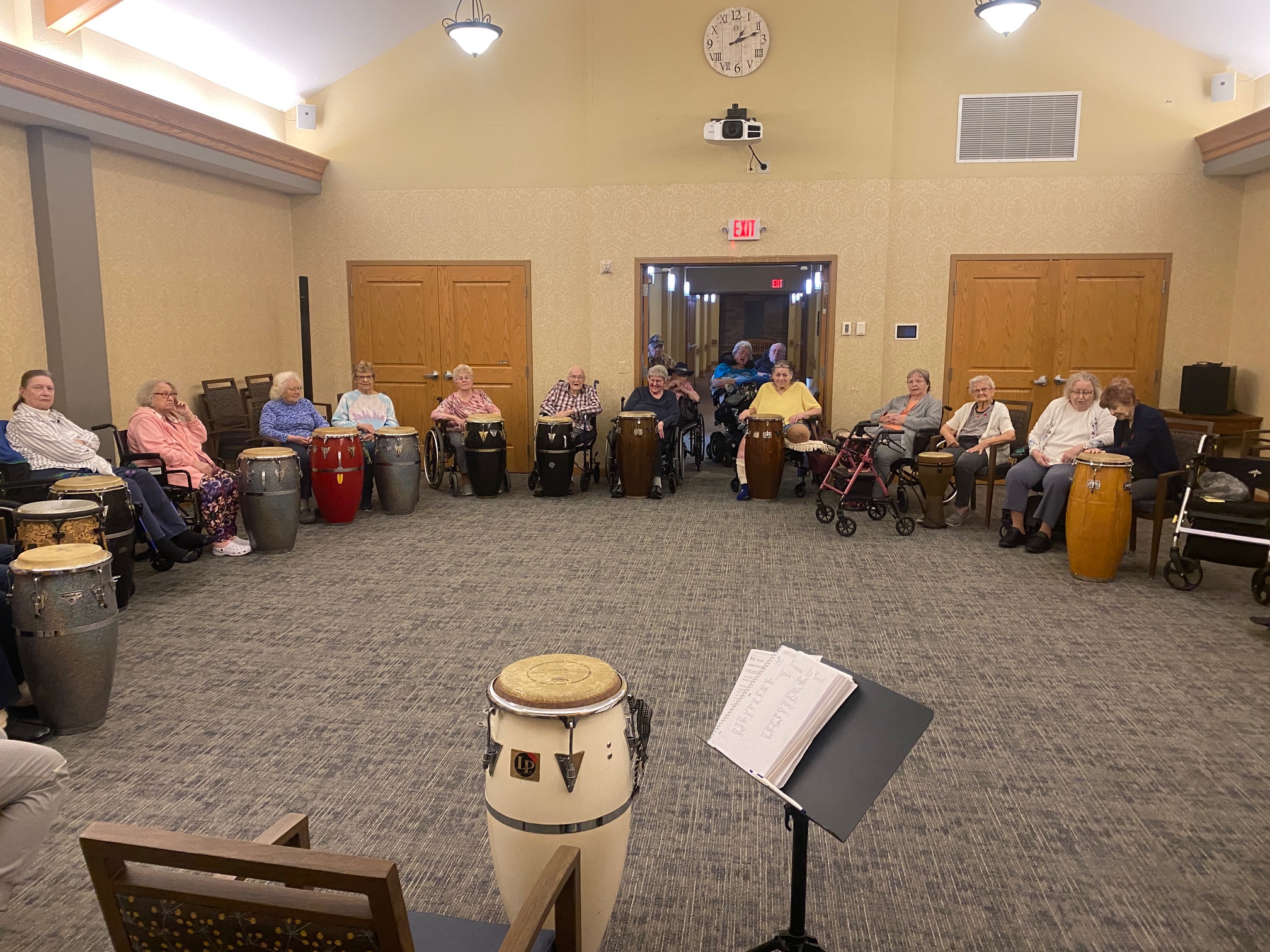
Located some 3 million light-years away in the arms of nearby spiral galaxy M33, giant stellar nursery NGC 604 is about 1,300 light-years across. That’s nearly 100 times the size of the Milky Way’s Orion Nebula, the closest large star forming region to planet Earth. In fact, among the star forming regions within the Local Group of galaxies, NGC 604 is second in size only to 30 Doradus, also known as the Tarantula Nebula in the Large Magellanic Cloud. Cavernous bubbles and cavities in NGC 604 fill this stunning infrared image from the James Webb Space Telescope’s NIRCam. They are carved out by energetic stellar winds from the region’s more than 200 hot, massive, young stars, all still in early stages of their lives.
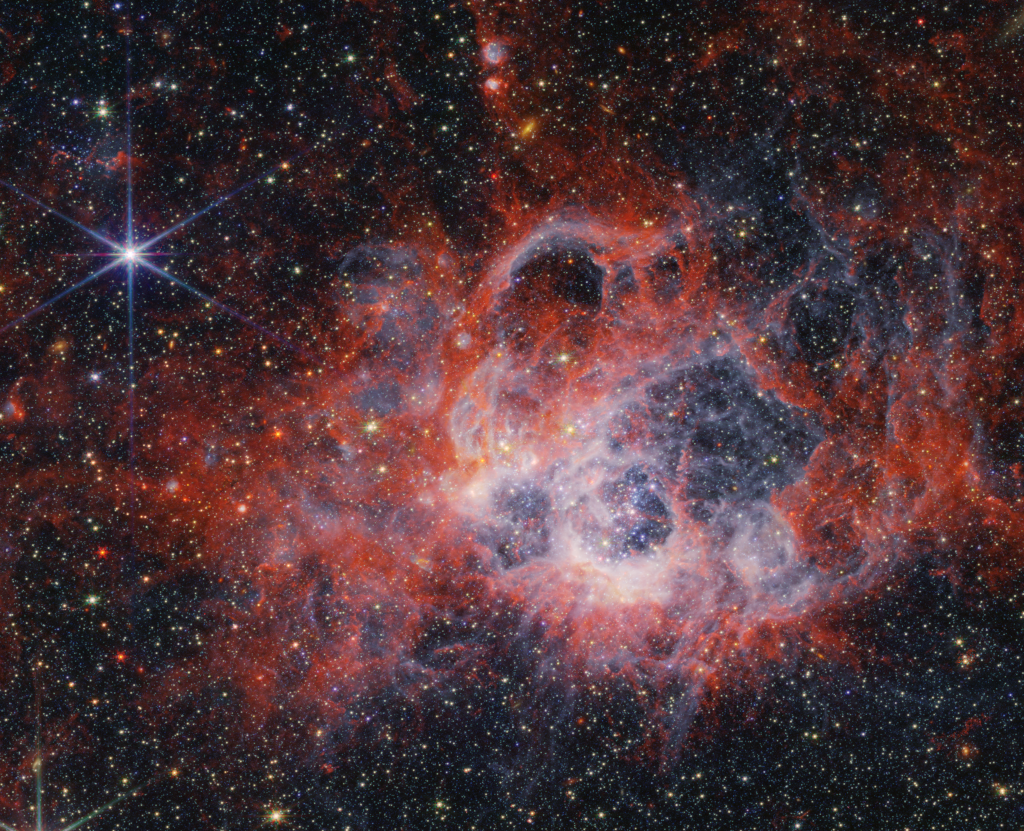
more...
Carl Allen (born April 25, 1961) is an American jazz drummer.
Allen attended William Paterson University.
He has worked with a wide variety of musicians, including Freddie Hubbard, Jackie McLean, George Coleman, Phil Woods, the Benny Green Trio, and Rickie Lee Jones.
It was with Green that Allen met bassist Christian McBride. The two have teamed up frequently, working for many combos of big name leaders. McBride recruited Allen for his band, Christian McBride & Inside Straight. Allen is that quintet’s drummer for both its first recording, Kinda Brown, and its road tours.
In 1988, Allen and Vincent Herring founded Big Apple Productions, which produced several albums featuring young jazz performers.
He joined the faculty of The Juilliard School in 2001 and became the Artistic Director of Jazz Studies in 2008. He was replaced as director by Wynton Marsalis in 2013 and left Juilliard at the end of the academic year.
more...Albert Nelson (April 25, 1923 – December 21, 1992 Indianola, MS), known by his stage name Albert King, was an African-American guitarist and singer who is often regarded as one of the greatest and most influential blues guitarists of all time. He is perhaps best known for his popular and influential album Born Under a Bad Sign (1967) and its title track. He, B.B. King, and Freddie King, all unrelated, were known as the “Kings of the Blues”. The left-handed Albert King was known for his “deep, dramatic sound that was widely imitated by both blues and rock guitarists”.
He was once nicknamed “The Velvet Bulldozer” because of his smooth singing and large size – he stood taller than average, with sources reporting 6 ft 4 in (1.93 m) or 6 ft 7 in (2.01 m), and weighed 250 lb (110 kg) – and also because he drove a bulldozer in one of his day jobs early in his career.
King was inducted into the Blues Hall of Fame in 1983. He was posthumously inducted into the Rock and Roll Hall of Fame in 2013. In 2023, he was ranked number 22 on Rolling Stone‘s 250 Greatest Guitarists of All Time.
more...Ella Jane Fitzgerald (April 25, 1917 – June 15, 1996) Newport News, VA was an American jazz singer, sometimes referred to as the “First Lady of Song”, “Queen of Jazz”, and “Lady Ella”. She was noted for her purity of tone, impeccable diction, phrasing, timing, intonation, and a “horn-like” improvisational ability, particularly in her scat singing.
After a tumultuous adolescence, Fitzgerald found stability in musical success with the Chick WebbOrchestra, performing across the country but most often associated with the Savoy Ballroom in Harlem. Her rendition of the nursery rhyme “A-Tisket, A-Tasket” helped boost both her and Webb to national fame. After taking over the band when Webb died, Fitzgerald left it behind in 1942 to start her solo career. Her manager was Moe Gale, co-founder of the Savoy, until she turned the rest of her career over to Norman Granz, who founded Verve Records to produce new records by Fitzgerald. With Verve, she recorded some of her more widely noted works, particularly her interpretations of the Great American Songbook.
Fitzgerald also appeared in films and as a guest on popular television shows in the second half of the twentieth century. Outside her solo career, she created music with Louis Armstrong, Duke Ellington, and The Ink Spots. These partnerships produced songs such as “Dream a Little Dream of Me“, “Cheek to Cheek“, “Into Each Life Some Rain Must Fall“, and “It Don’t Mean a Thing (If It Ain’t Got That Swing)“. In 1993, after a career of nearly sixty years, she gave her last public performance. Three years later, she died at age 79 after years of declining health. Her accolades included 14 Grammy Awards, the National Medal of Arts, the NAACP‘s inaugural President’s Award, and the Presidential Medal of Freedom.
more...More Posts
- Julian Priester Day
- World Music with Paco De Lucia
- Daily Roots with Alton Ellis & the Heptones
- The Cosmos with Sharpless 2-106
- John Medeski Day
- David Honeyboy Edwards Day
- World Music with Odpoczno
- Daily Roots with Ras Tweed
- The Cosmos with M8
- Johnny “Big Moose” Walker Day
- Elmo Hope Day
- Shad Collins Day
- World Music with Eleftheria Arvanitaki
- Daily Roots with Israel Vibration
- The Cosmos with NGC 1187
- Reggie Workman Day
- Big Bill Broonzy Day
- World Music with Very Be Careful
- Daily Roots with Uwe Banton
- The Cosmos with M20
